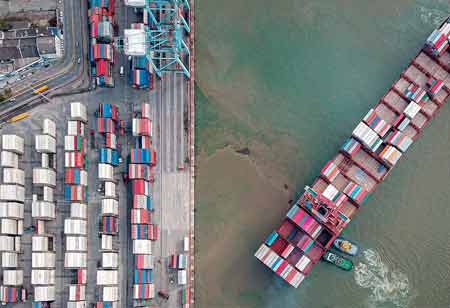More Reliability, Predictability, and Increased Capacity
Owned assets prevent daily operations from collapsing by offering a level of dependability that is difficult to find from a non-asset-based service. The benefits that asset-based suppliers bring can accelerate a shipper's business when taken as a whole.
Standardized Equipment Increases Load Capacity and Predictability
Assets are set up to deliver dependability and consistency under any load when owned. Shippers can now use the exact weight computation, weight distribution, and loading configuration since the variability of various pieces of equipment has been minimized. Compare that to providers who make use of a range of resources. To get the load moving, they must evaluate the load, its arrangement, and the size of the available box. Shipments can be delayed, and the bottom line is impacted if the available equipment is insufficient for the load and the appropriate equipment is not readily available. In the worst-case scenario, the shipper may be placed in an overweight situation.
When a shipper is fully aware of what it will receive, it can maximize load and increase capacity, reducing the number of shipments required and their associated expenses.
Because the shipper must anticipate the worst to avoid going overweight, it usually does not ship to full capacity when using equipment from a non-asset-based provider.
Owned and Maintained Assets Improve Capacity Dependability
Asset-based intermodal carriers invest significantly in their tractors, drivers, chassis, and containers to ensure their equipment is secure and operational for shippers' loads. Owned assets give shippers more dependable service, and carriers are better equipped to handle capacity spikes. This is because the supplier does not need communal pools, and equipment is easily accessible. Providers also look for the safest and most cutting-edge technology available to keep their equipment in top condition and work at its best.
Modern, well-maintained machinery is useless without a solid driver base to move the loads. A supplier with a pool of uniformed company drivers available can have more control over capacity.
More Freight Visibility and Efficiency
An asset-owned shipment's whole logistics process is managed from the beginning of planning to the delivery of the load. Every process step is visible, and an entire crew is prepared to handle unforeseen demands. Non-asset-based providers often have to engage more than one provider to handle a transfer, which might hinder a shipper's ability to see the load and make communication between the shipper and the provider less efficient. Additionally, asset-based intermodal carriers collaborate closely with railroads to improve prospects for shippers.
Priority loading and early access are examples of this, which let shipments be loaded and discharged first. When transporting shipments via intermodal, these advantages give clients an advantage and help keep cargo on schedule with a tight deadline.










